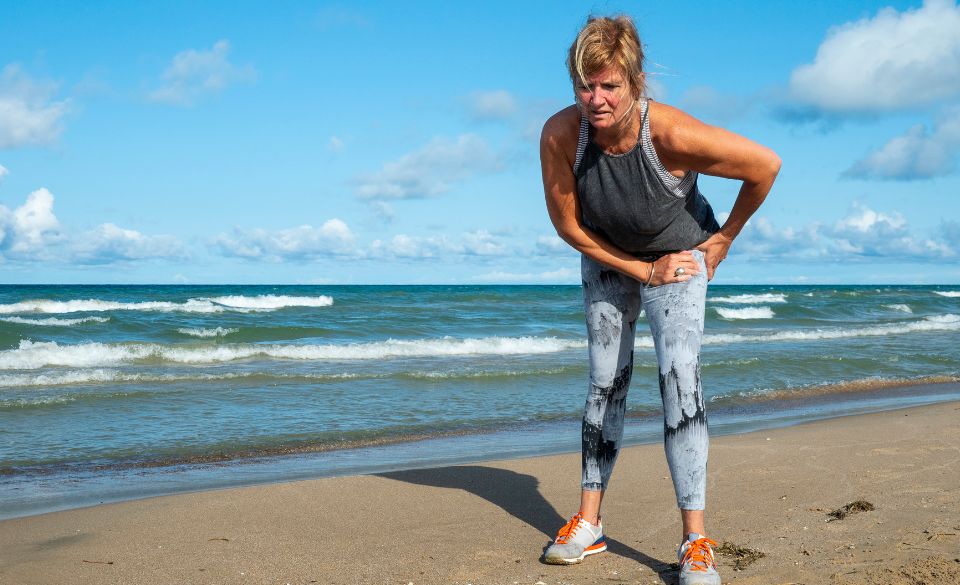
3 Hip Bursitis Exercises to Steer Clear From
Page Contents
For some people, bursitis can be a real pain—literally. When you’re dealing with hip bursitis, it can take a toll on your body and your life. It’s important to manage your symptoms with appropriate exercises and treatments, but it’s also important to know which exercises to avoid in order to keep your condition from getting worse. Here are 3 hip bursitis exercises to steer clear from.
The first exercise you should avoid if you have hip bursitis is jumping. Any kind of jumping, whether it be high jumps, skipping, or long jumps, can cause a lot of strain on your hips and can aggravate an existing bursitis. You should also steer clear of heavy lifting with your legs, as it can place a lot of pressure on the bursa located in your hip. Lifting should be done with a light weight or no weight at all with hip bursitis.
Another exercise to avoid is running. The impact of running can be tough on your hips and can aggravate any existing bursitis. Running can cause your bursa to swell and can make your bursitis worse. Walking can still be an exercise option, however, as it has a much lower impact on your hips.
Climbing stairs is also an exercise to stay away from if you have hip bursitis. The motion of climbing stairs creates a lot of downward pressure on your hip, which can aggravate your bursitis. You should also avoid stair stepper machines, as they can put a lot of strain on your hip and bursa.
Exercise Modifications
If you have hip bursitis, it doesn’t mean that you can’t exercise at all. You won’t be able to do all the same exercises as usual, but there are still plenty of exercise modifications that you can do. Stationary biking is a great way to get some low impact exercise in without putting too much stress on your hips. Elliptical machines are also a great option as they require very little impact on your joints and hips. Swimming can also be great for relieving stress on your joints and hips.
For strengthening exercises, focus on exercises that strengthen the hip abductors and rotators. Doing hip flexion and extension exercises can also help to strengthen the surrounding muscles. Try to avoid any exercises that require hip rotation, as this can still put strain on the hip and bursa. Doing squats and lunges can also help to strengthen the hip area without putting too much strain on the bursa.
Finally, it’s important to focus on stretching. Doing stretches that target the hip area, such as standing hip circles and hip flexor stretches, can help to ease symptoms and improve mobility. Make sure to take it slowly and don’t overstretch, as this can put pressure on the bursa and make your condition worse.
Stretching Precautions
Stretching is a great way to help reduce stiffness and increase flexibility in the hip area. When stretching, pay attention to your body and how it is feeling—stop if you experience any pain or discomfort. You should also avoid any stretches that involve rotating your hips. These stretches can put pressure on the bursa and can aggravate existing bursitis.
It’s important to note that, although stretching can help reduce hip bursitis pain, it cannot cure it. Stretching should be combined with other measures to help manage your symptoms effectively. Work with your doctor or physical therapist to create an effective treatment plan.
Other Tips for Managing Hip Bursitis
Managing hip bursitis, in addition to avoiding certain exercises, also involves rest and relaxation. Take breaks from activities that involve a lot of repetitive motion and allow your body to rest. Don’t sleep directly on your hip if you experience pain when laying down, as this can make it worse. Try alternating sides throughout the night or sleep with a pillow or blanket between your legs.
Applying ice to the area can also help to reduce inflammation and reduce discomfort. You can also take an over-the-counter anti-inflammatory medications to help alleviate pain and swelling. If you experience joint pain, make sure to take a joint supplement to help support healthy joint function.
Strength Exercises
Strengthening exercises are important for managing hip bursitis and strengthening the muscles around the joint. Strengthening exercises such as leg lifts, curb steps, and side-lying leg raises can all help to strengthen the hip area. You can also do hip adductors and hip abductors with ankle weights, resistance bands, or a cable machine. Make sure to start with low weights and progress gradually as your body is comfortable.
In addition to strengthening exercises, balance training is also important. Working on your balance can help to reduce the risk of falls and keep your joints strong. Work with your doctor or physical therapist to determine which balance exercises are safe for you to do. Activities such as single leg stances, bird dog exercises, and one-leg hops can help you work on your balance.
Core Exercises
Strong core muscles are essential for managing hip bursitis. Core exercises help to keep your body stabilized and decrease the chances of further damage to the joint. Planks, bridges, and side planks are all great exercises to strengthen your core muscles and reduce stress on the hip joint.
It’s also important to practice good posture. Good posture helps to put your hip in a better position and alleviates strain and pressure on the joint. Make sure to keep your spine in a neutral, relaxed position throughout the day. Avoid standing in one position for too long, as this can aggravate hip bursitis.
Final Words – 3 Hip Bursitis Exercises to Steer Clear From
Managing hip bursitis can be a challenge, but with the right strategies it is possible. Steering away from certain exercises and engaging in safe, low-impact activities can help keep your condition from getting worse. Make sure to work with your doctor or physical therapist to determine which activities are best for managing your symptoms. With the right exercises and treatments, you can take control of your hip bursitis and get back to living life pain-free.



